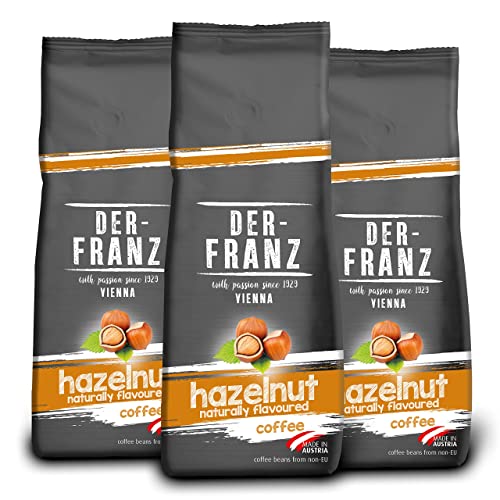The Most Underrated Companies To Watch In The Coffee Beans Types Industry

Coffee Bean Types: Arabica, Robusta, Liberica, and Excelsa
You probably already know that different types of plants produce distinct flavors. Learn more about four of the most sought-after varieties: Arabica, Robusta, Liberica and Excelsa.
Excelsa beans are a kind of Liberica which is grown exclusively in Southeast Asia. They have a more fruity and tarter flavor profile, and are often added to blends of beans to enhance the flavor.
Arabica
Arabica coffee beans are responsible for 75% of the world's production. Arabica beans are softer and sweeter than Robusta and come in different flavour profiles. The aroma and taste of a particular coffee can vary widely depending on the growing conditions and processing techniques used to make it.
The word "coffee" actually comes from the Arabic word for berry and coffee beans are fruit seeds that grow in bright red berries. coffee beans near me is believed that the ancient Ethiopian shepherds found that their goats were energized after eating the fruit berries. The cultivation of coffee quickly spread around the world.
Coffee beans can be grown at high altitudes, and they are able to thrive in cold temperatures and lots of rain. This is one of the reasons that Arabica is regarded as the most delicious coffee.
Many specialty coffee roasters and shops concentrate on sourcing their arabica beans ethically, by emphasizing fair wages for farmers and sustainable farming practices. These companies often blend arabica beans to create distinctive coffees that are suitable for many methods of brewing. Blending can be used to control the aroma, flavor as well as body and acidity of the coffee. It is usually preferred to achieve a consistent and balanced taste that appeals to a larger market.
Robusta

Robusta beans (Coffea canephora) are the second most common type of coffee bean grown in the world. They have a higher amount of caffeine per bean than Arabica and are more resistant to disease and pests. They also contain higher levels of chlorogenic acids, which are naturally-occurring antioxidants. These acids can cause oxidation during the brewing process, and can result in undesirable flavors.
The plant itself is more robust than arabica and is able to thrive in less favorable climate conditions and at lower elevations. It is tolerant of warmer temperatures and thrives in direct sunlight. It grows faster and produces more coffee per plant than arabica, making it a more cost-effective crop to grow.
Although it might appear counterintuitive Robusta beans are typically mixed with arabica to create coffee blends. If you see the names of countries such as Uganda or Kenya on a bag of coffee and you can be sure that there's some Robusta in there as well.
Although some roasters exclusively use arabica beans, most do blend the two varieties in order to cut cost and maintain quality. To ensure the integrity of the flavor you should select the best quality beans from a trusted source. This can be accomplished by purchasing your beans directly from farmers.
Liberica
Liberica beans have a shape similar to a football which is why they are different from other coffee beans. They have a distinct aroma that is fruity and floral with smoky undertones. They are paired with other coffee bean types to give them a deeper and more robust flavor.
Liberica coffee beans are grown in West Africa and Malaysia (Borneo) as well as in Southeast Asia. They can be found at low altitudes, and they can tolerate humid, hot climates. They are also more resistant to diseases than Arabica or Robusta.
These qualities make them perfect for growing at home. Online, you can buy the seeds from many sources. However, it is recommended to purchase the beans from local producers to ensure high-quality. The ideal conditions to grow Liberica coffee are fertile, deep volcano soils with a pH that is moderately acidic, and enough annual rainfall.
Excelsa is a different kind of coffee bean. It was initially classified as a separate species, but it has since been reclassified as a Liberica variant. These coffee beans are ovals that grow on large 20 to 30 feet coffee plants that are situated at medium altitudes. Their distinctive flavor is sweet and tart, making them a popular option for blends that are house-made. They are also lighter on the aroma and caffeine compared to Arabica and Robusta however they still have a distinct richness of flavor.
Excelsa
Although they're the fourth most popular kind of coffee beans Excelsa beans aren't as easily accessible as Arabica or Robusta. In fact they were considered to be distinct species of coffee until 2006 when they were reclassified to an alternative to Coffea liberica var. dewevrei. Currently, they're cultivated primarily in Southeast Asia and account for 7% of the world's production of coffee. The coffee beans are shaped like teardrops and are dark and mysterious in taste. These beans are often used to give blends more body and a rich tart taste of ripened fruits.
Arabica beans are the most well-known, and are well-known for their an apricot-like flavor. They thrive at high altitudes, and they thrive in warm tropical climates. They also have a hint of acidity. When roasted and brewed properly, they can have notes of chocolate, nuts, or even fruit.
Robusta is the second most popular coffee around the world. It is responsible for around 40% of all coffee consumed in the world. Robusta beans are more round and smaller, yet contain twice as much caffeine than Arabica. They also have more bitterness than the other two varieties and tend to have earthy and woody overtones.
After having learned about the four most commonly used types you can now pick your favorite drink. If you prefer an elegant and delicate taste, choose an arabica bean or a blend made up of robusta and arabica beans.
